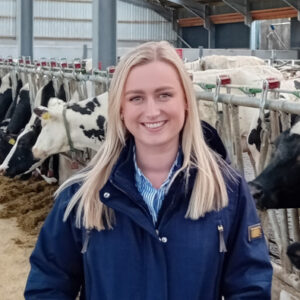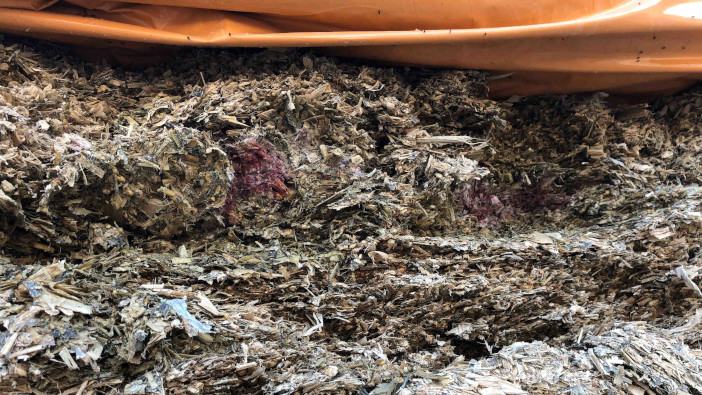Trident MicroNutri has issued advice to maize growers to mitigate the mycotoxin risk in feed maize, following a tricky season of warm and wet conditions.
“While maize represents a really beneficial winter feed for dairy cows, it is notoriously difficult to keep, as it tends to heat,” explains Anna Millar, ruminant technical manager at Trident MicroNutri.
“This heating is actually coming from rotting bacteria, eating up nutrients as part of their respiration, and the product of that respiration process is the heat. It is important to remember that heating and mycotoxins are separate, you can have both, or one or the other, so testing silages is crucial as a precautionary measure.”
The warm and wet climate the UK has seen in recent years lends itself to the development of fusarium moulds, especially in maize silage. This is an issue in feedstocks as they produce deoxynivalenol (DON) and zearalenone (ZON) mycotoxins.
These moulds are red in colour, and so easy to spot, however, they can still be undetected by the naked eye and can present multiple problems.
“First of all, you have a feed waste issue. If you see the red moulds, you should not put them into the TMR, so there is straight away a practical waste of feed,” adds Anna.
“Secondly, depending on the type, fusarium moulds cause issues with reduced milk production, general health and disruption to fertility.”
She explains that ZON mycotoxins mimic the biological activity of oestrogen, disrupting fertility. Fusarium moulds have also been linked to liver and kidney damage, while DON mycotoxins disrupt the gut.

Clinical signs
“If you do have a potential mycotoxin issue, even if you can’t see it on the pit, the key is to keep an eye on the cows,” Anna continues.
“Common signs are reduced milk production, and there are links to increased somatic cell count (SCC) and mastitis, as well as fertility problems and diarrhoea.”
As the toxin is a foreign body within the cow, the animal will have to expend more energy to get rid of it. “It is a toxic substance, so the immune system is fired up, there is an inflammatory response, and that is very costly to nutrients and energy,” she says.
“Instead of the cow putting her energy into milk production or fertility for example, she must put her energy into this inflammatory response to get rid of the mycotoxins. It leads to a repartitioning of energy.”
Regular testing winter silage can help determine the mycotoxin load. MycoCheck is a free accredited lab service to help growers understand the burden in a wide range of feedstocks.
If signs of mycotoxicosis are noticed, or if animals have underperformed, then a mycotoxin binder may be the best approach. These are designed to detoxify and bind major toxins.
Preventative measures
Anna concludes by saying that there are preventative measures that can be taken early in the silaging process, such as additives.
“By preserving silage, getting good fermentation and a more stable silage, we can reduce the likelihood of heating, and generally preventing the silage from getting mouldy. The silage additive SiloSolve FC can help kickstart the fermentation process in the right direction,” she says.
“However, when we are now at winter feeding, the key is to regularly test silages, and once we know more about what we are feeding, we can put strategies in place to minimise risk to cow health and performance, and therefore on farm profitability.”
For more information go to www.abagri.com


